"the real thing"
Information from the Martin Baker site (Courtesy Martin Baker Company, U.K) > EXTERNAL LINK
The Douglas F4D Skyray had the P5 ejection seat, which is a variant of the Mk. 5 seat.
Mk.5 / P5 / F5
To suit the
special requirements of the United States Navy, the Mk. 5 seat was introduced
in 1957 and its production paralleled to that of the Mk. 4. In general
the Mk. 5 seats conformed to the same basic pattern of the Mk. 4 and included
the standard 80 feet per second gun, 1¼ second time delay with g
switch and barostatic control, duplex drogue system plus all the other
features necessary for their use at all speeds and heights. To meet specific
American crash requirements however, the seat structure and harness were
strengthened to withstand deceleration loads of 40g, instead of the 25
g British specification, resulting in a slight increase in weight.

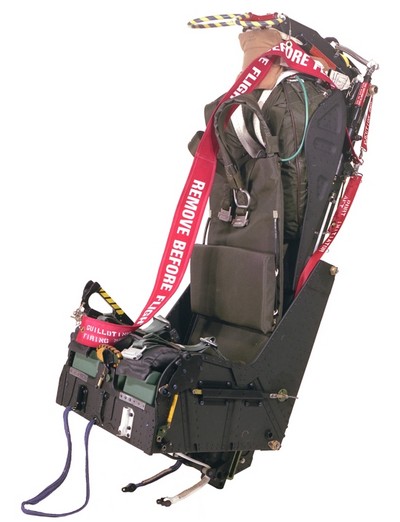
In addition,
the seats were provided with special canopy breaker peaks on the headbox
to provide for the eventuality of having to eject through the canopy, standard
practice on the A.5 seat installed in the Grumman 9F-8T Cougar.
On the majority of the other Mk. 5 seats the American system of jettisoning
the canopy was linked up with the face blind firing handle. The low level
capabilities of the Mk. 5 seat were successfully demonstrated in August
1957, when Flying Officer Sidney Hughes ejected from a Grumman Cougar at
the U.S. Naval Air Test Centre, Patuxent River, before a group of high
ranking U.S. Navy Officers.
Subsequently, the decision was made to standardise the Martin-Baker Mk. 5 seats for all United States Navy jet fighters and trainers, and many fuselages were sent to the Company’s factory at Denham for trial installations.
North American Sabre and Republic Thunderflash aircraft of the Norwegian Air Force were the first of many N.A.T.O. aircraft to be flown into Chalgrove airfield where the installation of Martin-Baker Mk. 5 seats was made, replacing the original American ejection seats fitted in these aircraft, because the Norwegian Air Force preferred Martin-Baker seats. Altogether the Mk. 5 seat has been fitted to nearly twenty types of American aircraft, including such advanced aircraft as the McDonnell Phantom, L.T.V. Crusader, and Grumman Intruder.
The Mk.5 seat was also fitted (probably)
in the first versions of the English Electric/ BAC
Lightning interceptor. ![]()
(courtesy tomcat tailhook forum, Anonimous contributor)
Just a little tailhook history.
"August, 1958. USS Midway steams south of Oahu on the second leg of an extended deployment to the western Pacific. At 10 p.m., it's very dark. There's a solid overcast at 1,600 feet and no visible horizon. The north wind gusts at 40 knots and seas are running five feet with a decided chop.
Charging into the wind, the carrier makes ready to recover aircraft from the final go of the day. This is Midway's first deployment with an angled deck and a permanent optical landing system. The crews of Carrier Air Group Two and Midway have trained to the peak of proficiency. Ship and aircraft are state of the art.
But it's 1958. It's night. The weather is marginal.
The fighters push on time. First down the chute are a pair of F3H Demons from VF-63. The McDonnell jet looks fast and futuristic, showing many lines that will return in the Phantom II, but the Demon is a dog. It's heavy and underpowered, and the single J-71 engine is less than reliable. Still, the first two fighters make good passes and trap.
Next up is the XO of VF-23 in a Douglas F4D Skyray. The Ford is a pure interceptor, a delta design with 16,000 pounds of thrust on tap from a big afterburning J-57, and featuring the Aero-13 fire-control system and AN/APQ-50 radar, the most advanced system of the day. Rounded and tubby where the Demon is linear and sleek, the Ford looks older and slower. It is neither.
The salty XO (= pilot) has nearly 250 traps (= carrier landings) in the Ford, about 40 of them at night. A good stick with lots of experience, his approach is rock steady and he's got a centered ball at a half-mile. He glances down to check airspeed and finds he's 20 knots fast. On the verge of pulling power, he looks up to see the ball skitter off the top of the lens. Momentarily surprised, he hesitates on the throttle and crosses the ramp high and fast. He pushes the nose over and makes a play for the deck. Wrong move. The Ford bashes down hard, driving the landing gear struts through the wings and crushing the drop tanks, which burst into flame. The jet bounces into the air as the pilot slams the throttle into afterburner and roars back into the inky darkness.
Now things get interesting.
The Ford punches through the overcast
in a steep climb and the XO risks a glance outside to assess damage. The
right wing is ablaze and the inboard slat on the left side is peeled back
over the top of the wing. He's got no lights in the cockpit but the fire
is bright enough to show three barberpoled gear indicators. This isn't
gonna work. Expecting to explode any second, he waits for the altimeter
to pass 2,500 feet, then reaches over his head and yanks down the face
curtain, initiating the ejection sequence. The canopy blows off and night
air blasts into the open cockpit. Certain he's been ejected, the XO takes
a look and is shocked to find he's still firmly attached to the Martin
Baker P5 ejection seat, which is still firmly attached to the
jet. A half-dozen hard pulls on the face curtain don't change things.

Ejection method of F4D Skyray
The Ford shudders as it nears the stall. The jet is capable of climbing to 50,000 feet in two minutes in a clean configuration, but with broken junk hanging out everywhere and gloriously aflame it's about to quit flying, even in afterburner. The XO instinctively lowers the nose and rolls wings level. Over the rush of wind he hears the approach controller, "Two oh seven, say intentions. Two oh seven, what are your intentions? Two oh seven, eject through the canopy, eject through the canopy!"
Canopy gone and strapped to a non-functioning seat, the XO feels a wave of impending doom wash over him. "So this is how I die," he thinks to himself.
But he hasn't been trained to die. He unstraps and unplugs, and bats the stick hard to the left. The sudden roll flings him out of the cockpit and he waits for the killing blow of the tail fin. It doesn't come, but he feels the heat of the afterburner as the jet roars by only feet away.
Momentarily relieved, he pulls the D-ring and feels the sweet tug of an opening parachute. He swings madly under the unseen canopy and descends rapidly, driven ahead of the wind. He tries to spot the horizon and realizes his dark visor is down. He pushes it up but still can't see much other than the deep, dark night.
Nearing the water he spots the surface chop and inflates his life raft, then deftly slips the chute harness as he splashes down, alone at night in the middle of the vast Pacific Ocean.
He pulls the toggle on his Mae West and nothing happens. He struggles to inflate the life preserver manually, then scrambles into the raft. All alone on the dark sea, he pulls out his emergency flares, but they are rusted together and won't ignite. With a sinking heart, he grabs his .38 and fires a few tracer rounds into the sky.
Miraculously, the plane guard destroyer
looms from the darkness and snatches him from the water. Less than an hour
after crossing the ramp, the XO is safely highlined from the "can" back
to the big aircraft carrier.
"
F-8 Crusader
The Martin Baker
F5A was also installed in the Vought
F-8 Crusader :
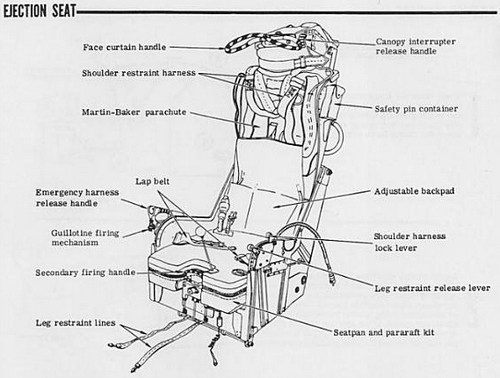
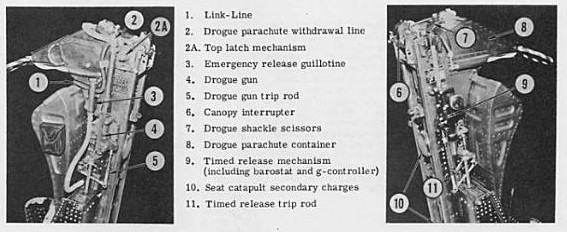
F5 seat
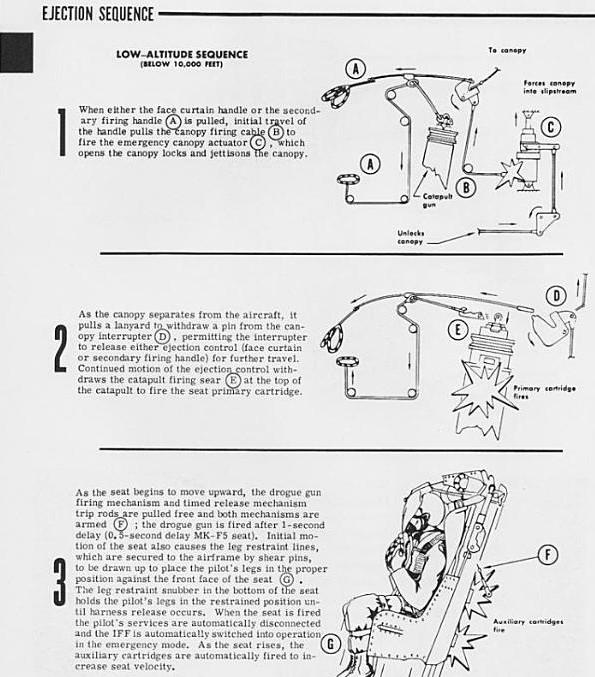

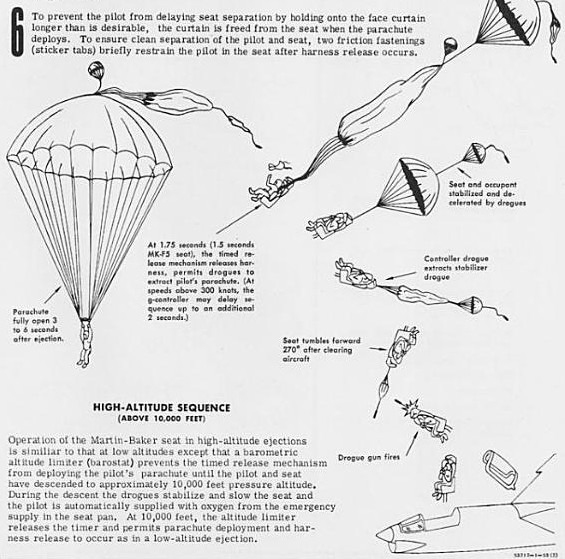
and for the F-8
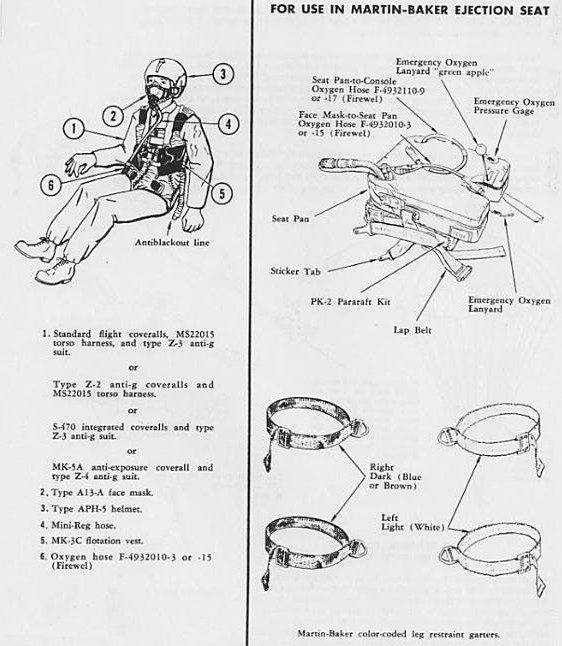
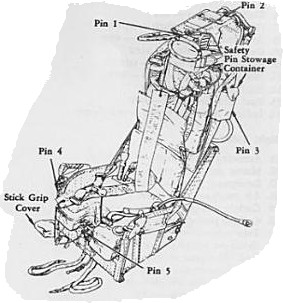 .
.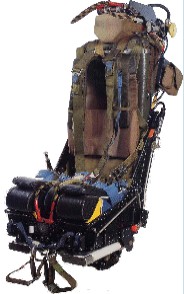

The MB Mk5 (P5)
seat was also later converted in the F7 seat. More info on the ejection
seat site :
http://www.ejectionsite.com/mkf7seat.htm
Back to 1/72 models.......

(c) Copyright Meindert "designer"/ All rights reserved. Your comments are welcomed by webmaster